Today Current Affairs: 25th January 2022 for UPSC IAS exams, State PSC exams, SSC CGL, State SSC, RRB, Railways, Banking Exam & IBPS, etc
Table of Contents
International Counter Terrorism Conference 2022:
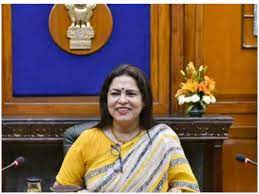
The International Counter Terrorism Conference 2022 was organised by the Global Counter Terrorism Council (GCTC).
- GCTC is an International Think-Tank Council with an overarching mission of reducing the vulnerability of people worldwide to terrorism by preventing, combating and prosecuting terrorist acts and countering incitement and recruitment to terrorism.
- Earlier, in the 13th BRICS Summit held in 2021, BRICS counter terrorism action plan was adopted.
Issues Raised by India:
- Emergence of new “religiophobia”, especially against Hindus, Buddhists and Sikhs, is a matter of serious concern and needs to be recognised, just like Christianophobia, Islamophobia and anti-semitism, to bring a balance in discussions on such issues.
- An irrational or obsessive fear or anxiety of religion, religious faith, religious people or religious organisations.
- In the past two years, several Member States have been trying to label terrorism into categories such as racially and ethnically motivated violent extremism, violent nationalism, right wing extremism, etc.
- Calling it a “dangerous” tendency, India said this goes against some of the accepted principles agreed to by all UN Member States in the recently adopted Global Counter-Terrorism Strategy.
- Global Counter-Terrorism Strategy states that terrorism in all its forms and manifestations should be condemned and there cannot be any justification for any act of terrorism, whatsoever.
- India’s annual resolution on the issue of counter-terrorism was adopted by consensus in the First Committee of the United Nations General Assembly (UNGA).
- India, a victim of state-sponsored cross-border terrorism, has been at the forefront in highlighting the serious threat to international peace and security emanating from acquisition of weapons of mass destruction by terrorist groups.
Environmental Emergency In Peru:
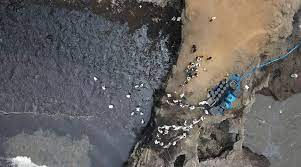
The Peruvian government declared a 90-day “environmental emergency” in damaged coastal territories, after an oil spill that saw 6,000 barrels of crude oil pour into the sea.
- The spill was caused by freak waves, which resulted from the eruption of a volcano in Tonga.
- The oil spill came out of a tanker belonging to the Spanish energy firm Repsol.
- The incident occurred at the La Pampilla refinery, some 30 kilometers north of the Peruvian capital of Lima in the Ventanilla district of the port city of Callao.
- A freak wave or rogue wave is usually defined as a wave that is two times the significant wave height of the area.
- The significant wave height is the average of the highest one-third of waves that occur over a given period.
- Rogue waves can disable and sink even the largest ships and oil rigs.
- These so-called “freak waves” are not confined to the Atlantic Ocean or North Sea.
- One of the places rogue waves appear to happen most frequently is off the southeast coast of South Africa.
- An oil spill refers to any uncontrolled release of crude oil, gasoline, fuels, or other oil by-products into the environment.
- Oil spills can pollute land, air, or water, though it is mostly used for oceanic oil spills.
- Oil spills have become a major environmental problem, chiefly as a result of intensified petroleum exploration and production on continental shelves and the transport of large amounts of oils in vessels.
- Oil spills that happen in rivers, bays and the ocean most often are caused by accidents involving tankers, barges, pipelines, refineries, drilling rigs and storage facilities.
Indian Environment Service (IES):

The Supreme Court asked the Centre to establish a dedicated Indian Environment Service (IES) at the all-India level.
- The creation of IES was recommended by a committee headed by former Cabinet Secretary TSR Subramanian in 2014.
- It will act as an expert group in the public and quasi-governmental sectors over the next decades, regarding environmental matters.
- The constant environmental degradation, ecological imbalance, climate change, water scarcity, etc. are a great concern for India.
- The citizens are facing many environmental issues such as air pollution, water pollution, non-eradication of solid waste and garbage and pollution of the natural environment.
- One of the major causes of environmental degradation is the flaw of the existing system that lies in the enforcement capabilities of environmental institutions at various levels.
- IES will overlap with the already existing one All India Service (Indian Forest Service).
- Apart from this, IES will also pose the challenge to federal structure.
Conjugal Rights:

A petition challenging the provision allowing restitution (recovery) of conjugal rights under Hindu personal laws (Hindu Marriage act 1955).has been pending in the Supreme Court (SC) for months without a hearing.
- The petition, titled Ojaswa Pathak vs Union of India, was filed in the SC in February 2019. The case was last heard in July 2021.
- Conjugal rights are rights created by marriage, i.e. right of the husband or the wife to the society of the other spouse.
- The law recognises these rights— both in personal laws dealing with marriage, divorce etc, and in criminal law requiring payment of maintenance and alimony to a spouse.
- Section 9 of the Hindu Marriage Act 1955 and Section 22 of the Special Marriage Act 1954 empower a husband or a wife to move the local district court, complaining that the other partner has “withdrawn” from the marriage without a “reasonable cause”.
- The concept of restitution of conjugal rights is codified in Hindu personal law now, but has colonial origins.
- Originating from Jewish law, the provision for restitution of conjugal rights reached India and other common law countries through British Rule.
- The British law treated wives as their husband’s personal possession hence they were not allowed to leave their husbands.
- Similar provisions exist in Muslim personal law as well as the Divorce Act, 1869, which governs Christian family law.
- Incidentally, in 1970, the U.K repealed the law on restitution of conjugal rights.
Ganoderma:
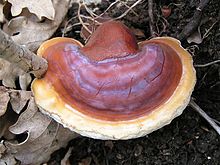
Researchers from Kerala have identified two new species of fungi from the genus Ganoderma that are associated with coconut stem rot.
- They have also genotyped the two fungi species, named Ganoderma keralense and G. pseudoapplanatum and identified genetic biomarkers.
- The DNA barcodes have been made publicly available in DNA sequence repositories so that future studies can use it for early detection of the pathogen. The research was published in the journal Mycologia.
- The butt rot or basal stem rot of coconut is known by several names in different parts of India: Ganoderma wilt (Andhra Pradesh), Anaberoga (Karnataka) and Thanjavur wilt (Tamil Nadu), to mention a few.
- The infection begins at the roots, but symptoms include discolouration and rotting of stem and leaves.
- In the later stages, flowering and nut set decreases and finally the coconut palm (Cocos nucifera) dies.
Pangong Tso:
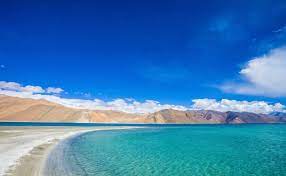
Construction of a bridge by China on the Pangong Tso in eastern Ladakh is a latest addition to the ongoing standoff between India and China.
- It is being built on the north bank of the Pangong Tso and the Chushul sub-sector on the south bank.
- The site of the bridge is within India’s claim line, although the area has been under Chinese control since 1958.
- It will help in quick mobilization of PLA troops between the two banks at one of the lake’s narrowest points.
- The Kailash range is around 35 km west of the bridge site. Once this bridge gets completed, it will enable Chinese troops to simply cross over, slashing travel time to Kailash range from about 12 hours to about four hours.
- It will strengthen the idea of permanency being established by Beijing in the region.
About Pangong Tso:
- Pangong Tso literally translates into a “conclave lake”. Pangong means conclave in Ladakhi and Tso means lake in Tibetan language.
- Situated at over 14,000 feet, the Lake is about 135 km long.
- It is formed from Tethys geosyncline.
- The Karakoram Mountain range, which crosses Tajikistan, Afghanistan, Pakistan, China and India, with heights of over 6,000 meters including K2, the world’s second highest peak, ends at the north bank of Pangong Tso.
- Its southern bank too has high broken mountains sloping towards Spangur Lake in the south.
- The lake’s water, while crystal clear, is brackish, making it undrinkable.
- The Line of Actual Control (LAC) – the line that separates Indian and Chinese troops since 1962 – generally runs along the land except for the width of Pangong Tso. Here, it runs through water.
- Both sides have marked their areas announcing which side belongs to which country.
- India controls about 45 km stretch of the Pangong Tso and China the rest.
The lake has mountain spurs of the Chang Chenmo range jutting down, referred to as fingers.
- There are eight of them in contention here. India and China have different understanding of where the LAC passes through.
- India has maintained that the LAC passes through Finger 8, which has been the site of the final military post of China.
- India has been patrolling the area – mostly on foot because of the nature of the terrain – up to Finger 8. But Indian forces have not had active control beyond Finger 4.
- China, on the other hand, says the LAC passes through Finger 2.
- It has been patrolling up to Finger 4- mostly in light vehicles, and at times up to Finger 2.
District Good Governance Index:

Union home minister Amit Shah recently launched the District Good Governance Index (DGGI) in Jammu and Kashmir, which is the first Union Territory to have such an index.
About the index:
- Launched for 20 districts of Jammu and Kashmir.
- It has been prepared by the Department of Administrative Reforms and Public Grievances (DARPG) in partnership with the Union Territory’s administration.
- Under the index, the policies, schemes and programs of the central as well as the state governments have been monitored at the district level.
- The beginning of this index in Jammu and Kashmir will slowly expand to all other states and a good governance competition will start in every district of the country.
- The index covered 10 sectors and 58 indicators.
- The index will benefit residents of Jammu and Kashmir in a big way as it will work towards improving the district machinery, make districts result-oriented and also improve their delivery mechanism.
Highlights of the index:
- Jammu district topped the composite ranking, followed by Doda and Samba districts of the Jammu Division.
- This was followed by Pulwama district of the Srinagar Division at fourth spot and Srinagar district at the fifth.
- The district of Rajouri finished at the last spot, while Poonch and Shopian districts also featured towards the end of the rankings.
- Srinagar district bagged the first rank in Public Infrastructure and Utilities sector.
- Srinagar also ranked in the top 5 districts in Composite GGI in Kashmir Division with a score of 5.313 points.
- Kishtwar topped in ‘Agriculture and Allied Sector’, Pulwama topped in ‘Human Resource Development’, Reasi topped in ‘Public Health’, Ramban topped in ‘Social Welfare and Development’, and Ganderbal topped in the ‘Financial Inclusion’ sector.
Kerala Bird Atlas:
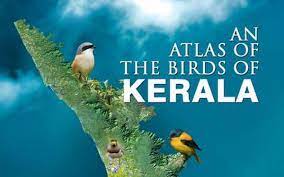
The Kerala Bird Atlas (KBA), the first-of-its-kind State-level bird atlas in India, has created solid baseline data about the distribution and abundance of bird species across all major habitats, giving an impetus to futuristic studies.
- Conducted as a citizen science-driven exercise with the participation of over 1,000 volunteers of the birdwatching community, the KBA has been prepared based on systematic surveys held twice over 60 days a year during the wet (July to September) and dry (January to March) seasons between 2015 and 2020.
- The KBA accounts for nearly three lakh records of 361 species, including 94 very rare species, 103 rare species, 110 common species, 44 very common species, and 10 most abundant species.
- It is arguably Asia’s largest bird atlas in terms of geographical extent, sampling effort and species coverage derived from the aggregation of 25,000 checklists.
- It was found that the species count was higher during the dry season than in the wet season while species richness and evenness were higher in the northern and central districts than in the southern districts.
- Most of the endemics were concentrated in the Western Ghats while the threatened species were mostly along the coast.
- The survey ignored the short duration passage of migrant species.
Sela Tunnel:

The final blast for the 980-metre long Sela Tunnel (Tunnel 1) was conducted by Director General Border Roads (DGBR). This marks the culmination of the excavation works on the complete Sela Tunnel Project.
- The Sela Tunnel Project is located in the West Kameng District of Arunachal Pradesh.
- Once completed, it will be a lifeline as it will provide all weather connectivity to Tawang.
- The project comprises of Tunnel 1, which is a 980 m long single tube tunnel and Tunnel 2, which is a 1555 m long twin tube tunnel.
- Tunnel 2 has one bi-lane tube for traffic and one escape tube for emergencies.
- It will also be one of the longest tunnels to have been constructed above altitude of 13,000 feet.
- The project also includes construction of an approach road of seven kilometres to Tunnel 1, which takes off from BCT Road and a link road of 1.3 kilometres, which connects Tunnel 1 to Tunnel 2.
- The foundation stone of the Sela Tunnel Project was laid by the Prime Minister Shri Narendra Modi in 2019.
Largest Exporter Of Gherkins In The World: India
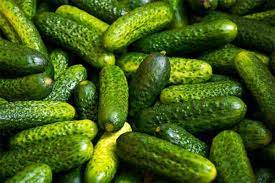
India has emerged as the largest exporter of gherkins in the world.
- India has crossed the USD 200 million mark of export of agricultural processed product, – pickling cucumber, which is globally referred as gherkins or cornichons, in the last financial year.
- Gherkins are exported under two categories — cucumbers and gherkins, which are prepared and preserved by vinegar or acetic acid and cucumbers and gherkins, which are provisionally preserved.
- Gherkin cultivation, processing and exports started in India during the early 1990s with a modest beginning in Karnataka and later extended to the neighbouring states of Tamil Nadu, Andhra Pradesh and Telangana.
- Nearly 15% production of the world’s gherkin requirement is grown in India.
- Gherkins is currently exported to more than 20 countries, with major destinations being North America, European countries and Oceanic countries such as USA, France, Germany, Australia, Spain, South Korea, Canada, Japan, Belgium, Russia, China, Sri Lanka and Israel.
- Apart from its export potential, the gherkin industry plays a key role in the creation of rural employment.
- In India, cultivation of gherkins is carried out under contract farming by around 90,000 small and marginal farmers with an annual production area of 65,000 acres.
Non-Fungible Tokens:

French luxury fashion brand Hermès is suing American digital artist Mason Rothschild who created the MetaBirkins series of NFTs (Non-Fungible Tokens), a rapidly growing part of the cryptoworld.
- An NFT is a unique, irreplaceable token that can be used to prove ownership of digital assets such as music, artwork, even tweets and memes.
- The term ‘non-fungible’ simply means that each token is different as opposed to a fungible currency such as money (a ten-rupee note can be exchanged for another and so on).
- Cryptocurrencies such as Bitcoin and Ethereum are also fungible, which means that one Bitcoin can be exchanged for another. But an NFT cannot be exchanged for another NFT because the two are different and therefore unique.
- Each token has a different value, depending on which asset it represents.
- NFT transactions are recorded on blockchains, which is a digital public ledger, with most NFTs being a part of the Ethereum blockchain.
- NFTs became popular in 2021, when they were beginning to be seen by artists as a convenient way to monetise their work.
- One of the other attractions is that NFTs are a part of a new kind of financial system called decentralised finance (DeFi), which does away with the involvement of institutions such as banks.
- For this reason, decentralised finance is seen as a more democratic financial system because it makes access to capital easier for lay people by essentially eliminating the role of banks and other associated institutions.




